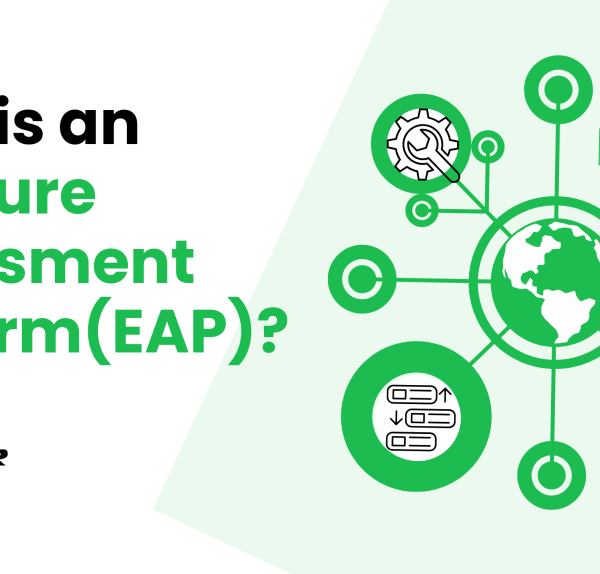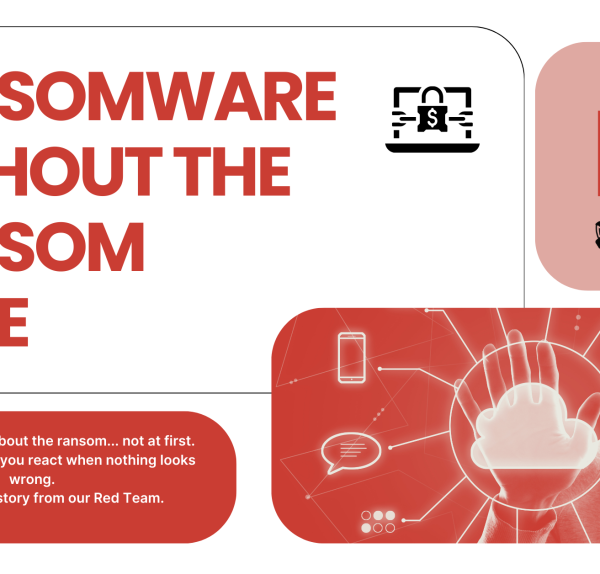Secure Singapore Fintech is a necessity in the dynamic financial landscape of Singapore. Navigating the ever-evolving regulatory environment and advanced cyber threat targeting APAC is crucial for success. The Monetary Authority of Singapore (MAS) plays a key role in this, and its Technology Risk Management (TRM) guidelines, established in 2013 and revised in 2021, stand as a cornerstone of cybersecurity best practices for financial institutions.
But what triggered the introduction of MAS TRM?
The rise of sophisticated cyber threats and the increasing reliance on technology within the financial sector necessitated a comprehensive framework to address technology-related risks. Recognizing this critical need, the MAS introduced TRM to:
- Respond to a changing threat landscape: As cyberattacks became more prevalent and complex, traditional security measures often proved inadequate. MAS TRM provided a framework to adapt and counter emerging threats.
- Elevate cybersecurity standards: Prior to TRM, cybersecurity practices varied across institutions. The guidelines established a benchmark for consistent and robust cybersecurity across the industry.
- Promote financial stability: Effective risk management in the digital age was identified as essential for safeguarding financial stability and protecting consumers.
So, what exactly is MAS TRM?
MAS TRM is a set of comprehensive guidelines established by the MAS to guide financial institutions in managing technology-related risks effectively. These guidelines aim to:
- Promote robust cybersecurity practices: From data protection to incident response, MAS TRM outlines essential measures to safeguard sensitive information and critical infrastructure.
- Strengthen governance and oversight: It emphasizes the importance of strong leadership commitment and sound risk management frameworks within financial institutions.
- Foster a culture of cyber resilience: The guidelines encourage continuous improvement and proactive approaches to building resilient IT systems.
Why is MAS TRM important to Secure Singapore Fintech?
Failing to comply with MAS TRM can lead to:
- Significant financial penalties: The MAS has the authority to impose substantial fines for non-compliance.
- Reputational damage: Breaches and security incidents can severely damage an institution’s reputation and erode public trust.
- Operational disruptions: Cyberattacks can lead to costly downtime and disrupted operations, impacting business continuity.
What are the roadblocks to smooth MAS TRM Compliance?
While the importance of MAS TRM compliance is undeniable to Secure Singapore Fintech, navigating its intricacies can be a daunting task for financial institutions. Traditional, manual approaches often present many challenges that hinder efficiency, accuracy, and overall effectiveness. Let’s dive into the key roadblocks that organizations face:
- Manual Workloads: The heart of the issue lies in the sheer volume of manual tasks involved. Data collection, analysis, reporting, and documentation all require significant time and resources, stretching teams thin and leaving them vulnerable to human error.
- Version Control Chaos: Multiple spreadsheets and documents scattered across departments lead to inconsistencies and version control nightmares. Reconciling conflicting data and ensuring everyone works with the latest version becomes a constant uphill battle.
- Unstructured Interpretations: Each organization might have its own interpretation of the guidelines, leading to inconsistencies and inefficiencies. This lack of a unified approach hinders collaboration and makes it difficult to achieve consistent compliance across the board.
- Siloed Compliance Efforts: Manual processes often create departmental silos, where teams work in isolation. This makes it difficult to share information, identify risks effectively, and implement cohesive mitigation strategies.
- One-Time Compliance Mindset: Traditional approaches often focus on a single annual assessment, neglecting the need for continuous monitoring and proactive risk management. This reactionary approach leaves organizations exposed to evolving threats.
- Misalignment with Business Goals: Compliance often becomes a separate activity, disconnected from core business processes. This results in duplicated efforts, inefficiencies, and missed opportunities to leverage compliance as a strategic advantage.
- Duplication of Efforts Across Frameworks: Lack of integration with other regulatory frameworks leads to redundant tasks and unnecessary work, further burdening already stretched resources.
These challenges make achieving and maintaining MAS TRM compliance a time-consuming and resource-intensive endeavour.
Automating MAS TRM Compliance with XRATOR
Achieving MAS TRM compliance might initially appear daunting, burdened by manual processes and fragmented approaches. However, XRATOR AutoComply offers financial institutions the means to transcend these challenges, enabling a more efficient, effective, and future-proof compliance journey. Let’s delve into how XRATOR addresses each challenge:
Automating the Journey:
We streamline the collection of evidence/proof. Tasks that were once manual can now be automated by our system. Think of retrieving evidence in the form of screenshots, CSV/XLSX extracts, policies, and procedures. All of this is facilitated either by the XRATOR engine or through integrations with the most popular industry tools.
Unified Platform, Collaborative Success:
Gone are the days of scattered documents and conflicting information. XRATOR consolidates everything within a single platform, ensuring consistency, version control, and seamless collaboration. It serves as a shared source of truth, easily accessible to all involved parties, thereby fostering clear communication and informed decision-making.
Pre-Built Framework, Simplified Navigation:
Navigating MAS TRM guidelines can be intricate. XRATOR offers a pre-built framework aligned with specific requirements, equipped with built-in tools and functionalities for SLAs, BIAs, ROI assessments, and risk quantification. It’s akin to having an embedded compliance expert, guiding you through the process and streamlining implementation.
Continuous Monitoring, Proactive Protection:
Avoid settling for a one-time compliance exercise. XRATOR’s continuous monitoring capabilities keep you ahead of the curve, proactively identifying and addressing risks before they escalate. Stay abreast with real-time insights and automated alerts, ensuring ongoing compliance and a resilient security posture.
Seamless Policy Integration
XRATOR comes with all the policies a company needs to comply with MAS TRM already included. If companies already have such policies in place, they can either use their own or create a blend between ours and theirs. XRATOR allows users to link policies and procedures with specific control points, enabling them to understand how the company is adhering to the requirements set forth in their documents.
Tech Stack Synergy
Leverage your existing technology. XRATOR integrates with your technology stack, automating data collection from various sources and streamlining workflows across your systems. Imagine compliance data flowing effortlessly, eliminating manual integrations and freeing up your resources.
Cross mapped with other frameworks
Stop duplicating efforts across different compliance frameworks. XRATOR maps MAS TRM, ISO 27001, NIST, and CEM into a single platform, eliminating redundancies and freeing your team for strategic security initiatives. One can confidently navigate regulations, gain deeper insights, and build a stronger security posture – all with effortless compliance.
XRATOR goes beyond just automating tasks; it empowers you to:
- Work smarter, not harder: Achieve more with less effort and resource allocation.
- Gain clarity and control: Make informed decisions based on accurate, real-time insights.
- Proactively manage risks: Stay ahead of threats and ensure ongoing compliance.
- Align security with business goals: Integrate compliance seamlessly into your security strategy.
- Simplify framework management: Address all your regulatory needs efficiently.
It’s not just about ticking boxes; it’s about building a resilient security posture and unlocking long-term success.
Understanding MAS TRM is not just a regulatory requirement, but a strategic imperative for financial institutions operating in Singapore. By proactively adopting its principles and leveraging automation tools, financial institutions can navigate the evolving cybersecurity landscape with confidence and ensure long-term success.
Success Story in automating MAS TRM
One of our valued clients, a leading Fintech firm in Singapore, approached us with a pressing challenge: the imperative need to align their cybersecurity protocols with the stringent regulatory standards set forth by the Monetary Authority of Singapore (MAS). Recognizing the urgency of their situation, our team promptly engaged with the client to address their cybersecurity concerns. In just 24 hours, we conducted a comprehensive assessment of their cybersecurity landscape, uncovering critical insights that would reshape their security posture.
Despite possessing an array of impressive cybersecurity tools, including licenses from CrowdStrike, it became evident during our assessment that the client was operating with incomplete security coverage. A key revelation was that they were monitoring fewer devices than they actually possessed, leaving them vulnerable to unforeseen risks. Also, the presence of unused licenses for CrowdStrike highlighted a common misconception in cybersecurity – the assumption of complete protection merely by advanced tools.
Our impact on the client was twofold. Firstly, we successfully assisted them in aligning with the rigorous compliance requirements mandated by MAS, ensuring that they met the necessary cybersecurity standards to operate securely within the financial sector. Secondly, our tailored cybersecurity tool empowered them to prioritize and automate critical compliance tasks, enhancing their overall security posture and operational efficiency.
This case study underscores the significance of thorough cybersecurity assessments, emphasizing the importance of uncovering hidden vulnerabilities and ensuring regulatory compliance within highly regulated industries such as Finetchs. At XRATOR, we advocate for a holistic approach to cybersecurity, delivering not only cutting-edge tools but also comprehensive strategies that enable organizations to proactively safeguard their digital assets and mitigate evolving cyber threats effectively.
By partnering with XRATOR, the client was able to not only address immediate cybersecurity challenges but also establish a robust framework for continuous security monitoring and compliance. As cybersecurity threats continue to evolve, our commitment remains unwavering – to empower organizations with the knowledge, tools, and expertise needed to navigate the complex cybersecurity landscape confidently.






